Home Recording Studio For Rappers
Share

There are a ton of you out there who are aspiring rappers and MC’s that have loads of awesome rhymes and ideas written down but no way to get them recorded professionally and share them with the world.
Fortunately for you, we live in a time with abundant cheap technologies that are readily available allowing you to get a couple pieces of gear and be ready to record your next album or mixtape. With practice you can now record in the comfort of your own home and produce sound with quality that can rival the professional big name recording studios.
A home recording studio for a rapper has a fairly same set up as for a singer or voice over artist.
Must haves:
Optional:
Must Haves
Recorder
You must have a recording device to capture and store the recordings that you are doing. The most common recorder nowadays is a computer but there is another option available called stand alone recorders, like the Tascam DP-03SD Digital Portastudio Multitrack Recorder. If you have a stand alone recorder you do not need an audio interface because you can plug inputs directly into the recorder.
Audio Interface
If you are using a computer then you will need an audio interface, which is a device that you can plug microphones, instruments and midi devices into and then the device transfers that information into your computer. The one I have in my home studio is a Focusrite Scarlett 2i2 and plugs in with a USB cord. There are other connectors like firewire that have faster transfer speeds.
DAW
What digital audio workstation (DAW) you choose is an important decision when setting up your home studio. If you have an Apple computer then Garageband comes stock so this is going to be the cheapest option. Protools is the industry standard but there are so many good options like Ableton, Cakewalk, Reason, FL Studio and even a new one called Bitwig.
If you already have experience with a DAW I would just stick with it since the learning curve can be so high with these programs. If you have no experience you can always do a free trial of a couple programs and then decide which one you like. You might also find it helpful to watch some YouTube tutorials on the DAW while going through the free trial to give you some more ideas of how to use different functions within the program.
Microphone
Now you need a vocal microphone. You can either go with a large diaphragm condenser (LDC) or a dynamic mic. A large diaphragm condenser mic is commonly used for vocals in professional studios because they have a good frequency response, can pick up the low ends and are very sensitive in their ability to pick up sounds. A condenser microphone will require phantom power. Dynamic mics are a bit more rugged than condensers but do not have as good of a frequency response. A common vocal dynamic microphone is the Shure SM7B.
Headphones
Headphones and monitors are used to listen back and mix the tracks. You don’t need both so beginners often start out with just a pair of monitoring headphones. You want to choose a pair with a flat frequency response and avoid headphones with bass boost or enhanced audio. A good pair of headphones are the Audio-Technica ATH-M50x. If you have monitors it is important to consider your room as you might need treatment which is discussed later.
There you have it, the essentials needed for a home recording studio as a hip hop vocalist; a computer with a DAW, and audio interface, a mic and a pair of headphones. You can either upload an instrumental you purchase or are given from a friend into your DAW or you can create your own instrumental in your DAW using samples, midi and computer instruments. Use your mic to record fire verses and timeless hooks on top of the instrumentals. Then mix the tracks to your best abilities with your monitoring headphones.
The Extras

Beat Machine
Obviously there are some extras that you can add to your studio to give you more options and better functionality. A MPC is a stand alone beat machine used in a lot of hip hop and rap production. An example is an Akai MPC Studio. You can use your audio interface to plug these machines directly into your computer and record the beats you make on the MPC into your DAW as an audio file. Some DAW’s will even sync up with your MPC or beat machine so that you can control the DAW with an external device.
Keyboard
Midi keyboards can also be used to connect to your DAW. Often you can use a USB cord to plug the keyboard directly into your computer without the need to route it through the audio interface. These keyboards can be used to control and play electronic instruments like horns or electronic pianos that are programmed into your DAW. A simple keyboard to start with is the Akai Professional MPK Mini MKII which includes midi pads and built in sounds!
Plugins
You can also purchase what are called plugins. A plugin can be a set of instruments that you can use your midi keyboard to play. They can also be an audio processor plugin like a compressor or equalizer. You can also find auto tune plug ins out there to add voice effects to your tracks. If you can think of it there is probably a plug in for it.
Acoustic Treatment

Another thing to consider for your home studio is the room in which you are recording and whether you need acoustic treatment or not. If you have a boomy sounding room with echoes and vibrations you can use acoustic foam to help absorb some of the sound waves to provide better recording and less interrupted sound for mixing if you are using monitors.
If you have a lot of outside noise (ie: street noise) that your mic is picking up then you may need some isolation in order to get a better vocal recording. Check out this cheap and easy solution for this problem.
For a home based music studio the main acoustic problems are:
- Too much reverb
- Room modes / standing waves
- First reflections or echoes
Too much reverberation?
Treat by adding absorptive panels like acoustic foam to dampen the echoes and bring down the reverberation time in your room. Bringing the reverberation time down to below 0.5 seconds is important for crisp recordings.
Check out our recording studio bundles here.
Room modes or standing waves?
Treat by adding bass traps to the upper corners of the room in combination with acoustic panels on the walls.
The frequency of room modes depends on the size of your room but they occur when the sound waves bounce back and forth between surfaces in the room at a resonant frequency. Standing waves can be detrimental when mixing because they change the frequency response of the room!
First reflections or noticeable echoes?
Treat by adding absorption panels to the reflections points of your speakers or other sound source(s). Below is a diagram showing the reflection points for an average home recording studio setup.

Setup Idea For Hip Hop Studio
Studio Example A Breakdown:
1. Bass traps in upper corners to dampen low end frequencies and prevent standing waves.
2. Acoustic foam panels on side wall to absorb first reflections and lower reverberation time.
3. Acoustic foam panels on ceiling to absorb first reflections and stop echoes.
4. Acoustic foam panels on wall behind monitors to absorb first reflections.
5. Acoustic foam panels on back wall to absorb first reflections from monitors.
6. Monitor isolation pads to absorb vibration that would transfer to your desk and floor.
Example A is a standard home mixing studio setup or an at home beat making room.




Please let us know if you have any additional tips or if you have any questions at all. Leave your questions or tips in the comments below.
Visit our SHOP!
Read More:
DIY Vocal Booth For Home Studio
Soundproofing Foam For Music Studios
What Is A Condenser Microphone & How Does It Work?
DIY Isolation Vocal Booth For Home Studio & Recording On The Go
What Is Transmission Loss Of Sound ?
What Is Noise Reduction Coefficient (NRC) ?
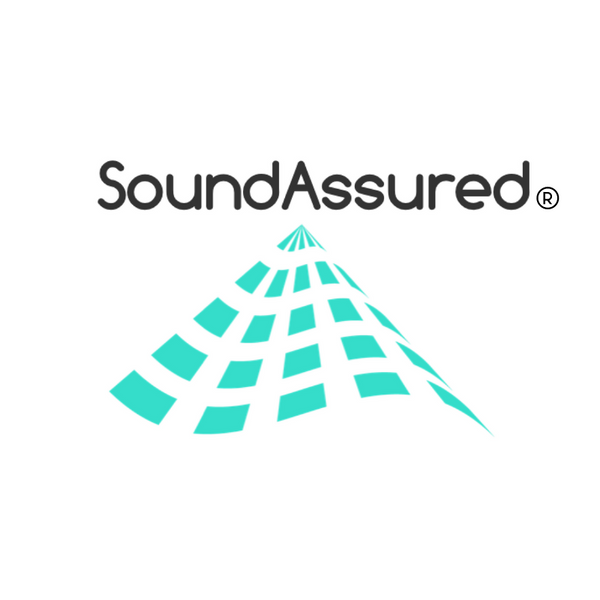
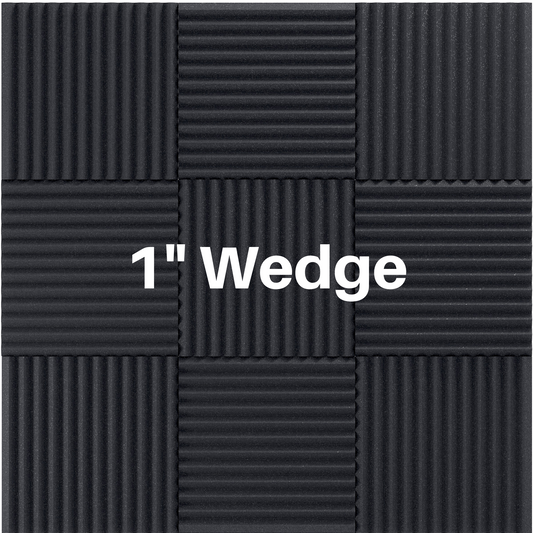
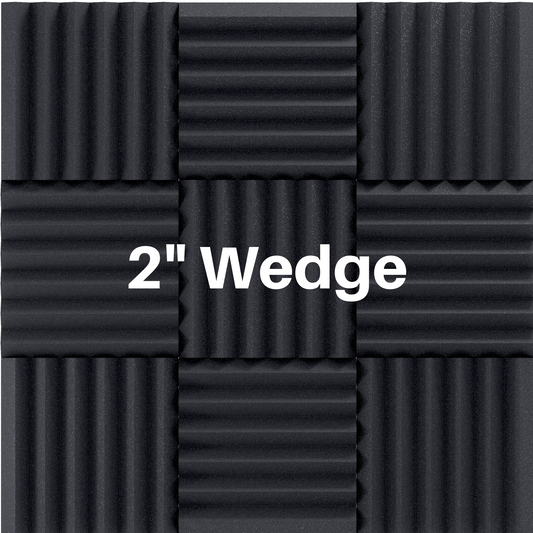
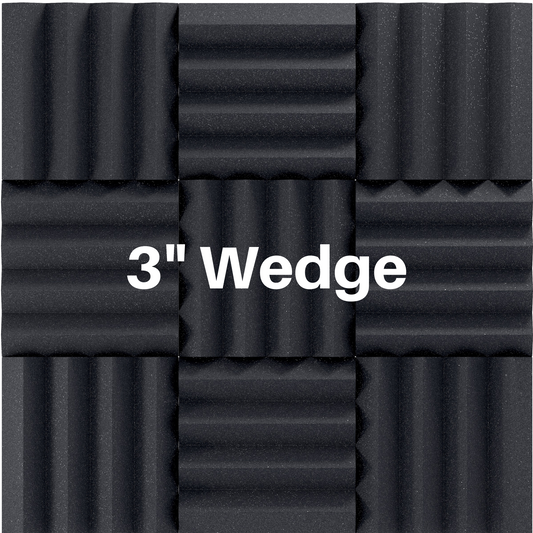
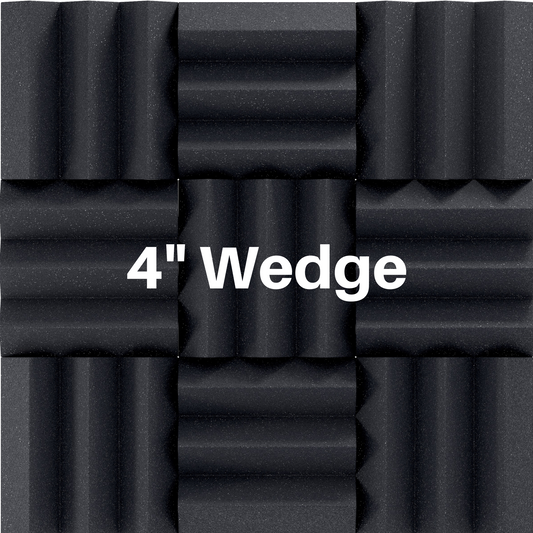
2 comments
I want to get my own studio
Hi I’m blessing and I want to record a song with my friend may I have some details of everything